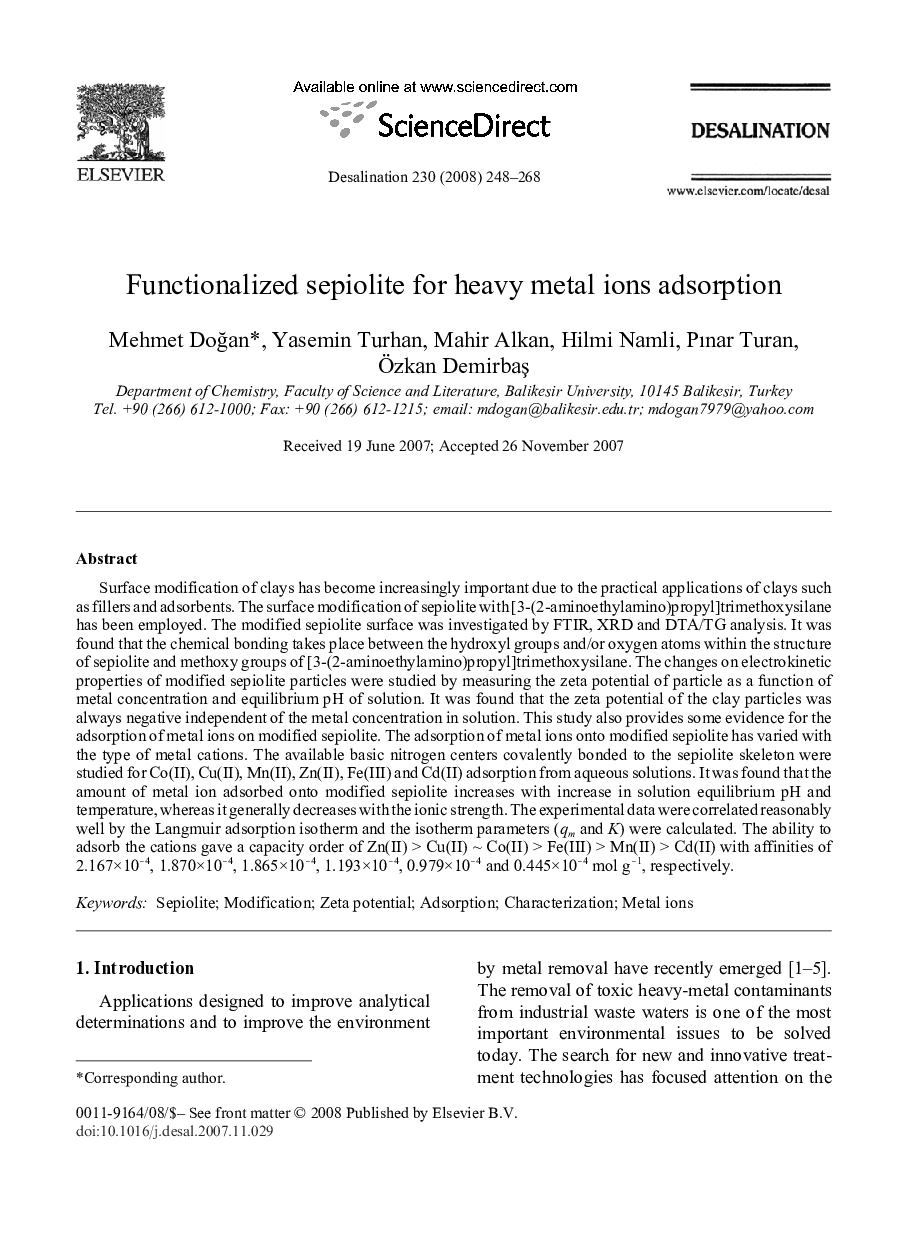| کد مقاله | کد نشریه | سال انتشار | مقاله انگلیسی | نسخه تمام متن |
|---|---|---|---|---|
| 627241 | 1455460 | 2008 | 21 صفحه PDF | دانلود رایگان |

Surface modification of clays has become increasingly important due to the practical applications of clays such as fillers and adsorbents. The surface modification of sepiolite with [3-(2-aminoethylamino)propyl]trimethoxysilane has been employed. The modified sepiolite surface was investigated by FTIR, XRD and DTA/TG analysis. It was found that the chemical bonding takes place between the hydroxyl groups and/or oxygen atoms within the structure of sepiolite and methoxy groups of [3-(2-aminoethylamino)propyl]trimethoxysilane. The changes on electrokinetic properties of modified sepiolite particles were studied by measuring the zeta potential of particle as a function of metal concentration and equilibrium pH of solution. It was found that the zeta potential of the clay particles was always negative independent of the metal concentration in solution. This study also provides some evidence for the adsorption of metal ions on modified sepiolite. The adsorption of metal ions onto modified sepiolite has varied with the type of metal cations. The available basic nitrogen centers covalently bonded to the sepiolite skeleton were studied for Co(II), Cu(II), Mn(II), Zn(II), Fe(III) and Cd(II) adsorption from aqueous solutions. It was found that the amount of metal ion adsorbed onto modified sepiolite increases with increase in solution equilibrium pH and temperature, whereas it generally decreases with the ionic strength. The experimental data were correlated reasonably well by the Langmuir adsorption isotherm and the isotherm parameters (qm and K) were calculated. The ability to adsorb the cations gave a capacity order of Zn(II) > Cu(II) ~ Co(II) > Fe(III) > Mn(II) > Cd(II) with affinities of 2.167×10−4, 1.870×10−4, 1.865×10−4, 1.193×10−4, 0.979×10−4 and 0.445×10−4 mol g−1, respectively.
Journal: Desalination - Volume 230, Issues 1–3, 30 September 2008, Pages 248-268